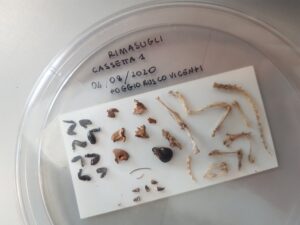Lesser Kestrel Falco naumanni diet during different phases of breeding and post breeding periods in central Greece
Christos Christakis, Maria Makri, Haralambos Alivizatos & Athanassios Sfougaris
Abstract:
The Lesser Kestrel Falco naumanni is a small migratory falcon, foraging in areas covered by relatively low vegetation. In the Thessalian Plain, Central Greece, it feeds mainly on large Orthoptera and Coleoptera, and is characterized by an opportunistic feeding strategy. The purpose of this study was to investigate the composition of the Lesser Kestrel diet in the Thessalian plain. Systematic visits to two large representative colonies of the Lesser Kestrel in the study area were performed, in order to collect pellets during 2014 and 2015 breeding and post breeding periods of the species. Pellet analysis indicated that Orthoptera and Coleoptera were the main prey categories, which seem to have been the most specialized and dominant feeding choices of the species in the study area, while all other prey categories were rare and not specialized. Lesser Kestrel relied its diet on Orthoptera (Tettigoniidae and Acrididae), mainly during the breeding and post breeding phases, while the feeding strategy of the species during these two phases can be characterized as opportunistic. On the contrary, prior to the breeding phase, main prey category of the species in the study area was Coleoptera (Carabidae and Scarabaeidae). Moreover, a narrower niche breadth of the species based on Levins’ index, was recorded during the breeding phase for both years of the study, indicating that the species restricted the variety of the diet during this phase. Conclusively, the species during its whole breeding season made different prey choices, depending on the breeding phase and its specialized needs during each phase.
